If you are an advertiser in the B2B segment and had the chance to dabble in digital marketing activities with the support of external agencies, have you ever encountered disingenuous campaign conversations and perhaps executional surprises?
I know I had. But that was only in hindsight.
It was around 2011 when I was first approached to participate in an on-going digital marketing campaign. While I have been in the IT industry for over two decades, digital and social media marketing were different animals. They were large and rather unwieldy in which I was asked to tackle.
It was an SEO (search engine optimisation) campaign which had been going on for two years prior to my involvement. Campaign reports were provided periodically. Money was flowing out to outsourced agency at a 4-digit sum on a monthly basis for an informational website which had fewer than 20 pages, with one section for visitors to voluntarily give four fields of their data.
Fast forward, I am still learning the ropes from veterans and Generation Z. But the difference is the ability to ask the right questions, identify snake oil sellers and the real McCoy.
Digital marketing for all its bad reputation and from what I personally experienced was and probably still is, in some areas, a new frontier for “cowboys”. It was dubbed the “Wild Wild West” in a nascent industry which digital marketing service providers peddled their wares and offered to bring business owners to a promiseland that could see their investments turned multi-fold, within a given amount of time.
When things didn’t turn out as planned, one of the common reasons attributed for the shortfall would be time. And more time would be needed to allow digital strategies to gain traction and thus, justified paying retainer fees.
Sometimes digital agencies, which they are commonly known, pointed the need to trial and error. The need to test the market with different tactics. Many of these tactics consisted heavy-lifting tasks.
In fact, time, tasks and tactics were all reasonable perimeters to draw up any new endeavours. The difference lied in the spirit, attributes and values which went into digital marketing projects and how the collective values of digital marketing were established and projected.
The cowboys soon ended up as scourges for many businesses. After making relatively sizable investment, business owners felt ripped off. Some even dedicated internal resources to work with external agencies. Some of these digital agencies even operated on a fly-by-night mode, which worsen the aftertaste.
Very soon, digital and social media marketing was labelled as a “con job”. I remember vividly such sentiment was prevalent in 2013 when I participated in a forum for CxOs in which we discussed and explored complementary regional collaborations.
A number of business leaders from Singapore and within the regions chastised in unity when asked whether SEO or marketing in FaceBook would be a good way to stretch their marketing dollars. This then made me realised how rampant an already bad situation was.
Some feel that the industry is still very much the same today. It is still as dismay and many B2B companies are reluctant to invest in digital marketing strategies to promote themselves and stick with marketing in its traditional format. But this hasn’t been able to lift-up productivity either.
While traditional elements of marketing are still in vogue, it is evident that some of the thinking in go-to-market (GTM) has changed. Such as the medium where content is being consumed. Print ads for instance have been facing tsunamis.
Some might agree, it is getting harder to generate new businesses or sometimes upsell to existing clients in the B2B space.
Try randomly asking B2B organisations how challenging it was to generate leads in recent years, you are likely to get similar replies from both SME and MNC advertisers, with perhaps more skepticism from the former.
Companies which provide solutions and services to other businesses depend on a few ‘channels’ to develop or maintain brand awareness, generate interest, stoke enquiries and hopefully, convert them into sales. ‘Lead gen’ in short.
One of these channels is digital marketing and itself can be broken down into sub-channels, different platforms or pathways, which we would come to shortly.
While some industry observers think that digital marketing is still relatively young, it can be said to have mature in the past decade.
Before we dive in, here are some questions to pique one’s thought process and hopefully provide a context for my readers to dig deeper.
- If profit and loss (P&L) were direct KPIs in your work portfolio, what were the outcomes of your digital marketing campaigns you were involved in? Were you able to articulate the factors which manifested into those results?
- How many of these campaigns were augmented by external expertise?
- Which digital channels did your campaigns go to?
- How was your investment allocated in your marketing activities? And why?
Tying these questions to the campaigns you had run can help to accentuate your learning experience, looking back. Knowing some of these questions can lead to further queries, spark curiosity and I hope they help for your future GTM exercises.
A quick glance in the marketing landscape and you might know where most marketing dollars go to.
Now in case you are not aware, in a general context, Alphabet (which owns Google and YouTube) and Facebook are the duopoly which take up the lion’s shares.
In a survey reported by eMarketer in Fortune magazine, the two tech giants gobble up over 50% of the global ad dollars, and over 60% in the U.S.
See image below..
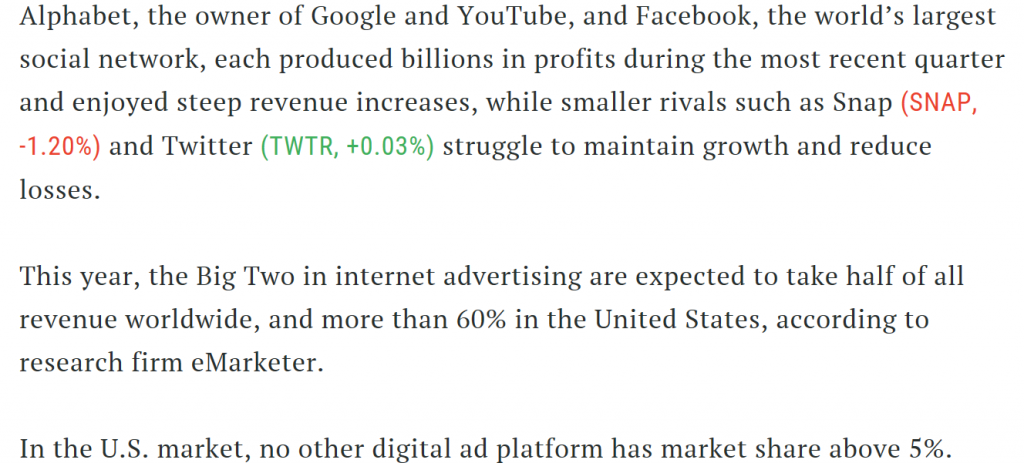
With these parameters in mind, let us look at things from inside out as advertisers.
Depending on the scope, digital marketing agencies usually play an in-between role between advertisers and platform owners. This role is important. Agencies consult, conceptualise and carry out operational activities in a campaign. They act as value-add service providers.
However, experience in recent years led me to ask, do companies which provide digital marketing services usually leave their customers wanted?
I have run several campaigns in the past few years and engaged over a dozen agencies, big and small ones. Local and overseas. Many were quite similar in what they provide, some were very slick.
One of their commonalities comes in the form of being task-oriented.
This was fine except that the ‘me-too’ approach can be a ‘problem’ as agencies tend to map their offerings to what was listed in clients’ digital media brief (if any), in a task-based methodology.
The ‘me-too’ agencies examined the brief, picked out any areas which they felt might not be attainable or impractical. Some provided suggestions or alternatives. Once these were sorted out, a proposal was presented. If all was good, advertisers chose the one or two agencies nearest to their evaluation criteria.
This was where issues arose.
Some agencies seemed to be stuck in a time-warp. They relied on traditional metrics to draw up primary indices to measure success or failure of a B2B lead generation campaign.
Two common examples were the used of impressions and clicks as key yardsticks to measure. I called them “vanity metrics”. If they were in high numbers, the results were good.
The next thing that followed was a common explanation that such results would take time to gain traction before realistic conversion could be expected. These were generally true.
As in any B2B type of operations, it is universally accepted to not expect overnight results. So what advertisers would do is to continue to plough resources into these campaigns which continue with cosmetic conversations and outcomes.
This can buy some time for agencies to hold on to their clients.
Don’t get me wrong that the task-oriented approach is not right. In fact, it is crucial. As an advertiser, I appreciate the tasks agencies carry out. Some tasks require certain level of competency, not to mention heavy-lifting activities.
Take trekking for instance. If you are planning a trek up a mountain and the weather is foggy, you can either not proceed or go ahead, as long as the necessary safety measures are taken into consideration.
If you decide to proceed despite low visibility, what you could do it to “feel” you way along the journey. You have tools to guide you, like a compass to point the direction you are heading. You have maps, both GPS and traditional. But you lack the skills to read coordinates, longitude, latitude and basic topographic knowledge.
You hire guides. Trekking guides who possess the know-how in their domain, are familiar with trekking mountains and have necessary auxiliary skills to conduct a trekking campaign.
Both you and your guides are aware that the destination to the summit is important. What is also important are the stuff you and the guides bring along for the expedition. Did you bring the right compass? Did your guide bring the correct maps? Were the coordinates, mapping of distances and specific locations along the treks you might take match against established data, if any? Did you know how to verify them?
When the trek begins in the foggy environment with one arm’s length visibility, all you can do is to “feel” that you are ascending. If you are not, are you then walking on flat ground? It is not unusual to reach a plateau for a short distance before ascending again. But how can you know? Does your guide provide plausible explanations when face with uncertain terrains?
It is reasonable to say that in digital marketing, looking at the right things takes an equal weightage with results. But what is worst is when advertisers are being influenced to look at incorrect measurements and outcomes.
I attended an annual conference in Dec 2018 by one of my technology partners and in one of the speakers’ presentations, he shared about going beyond impressions and clicks.
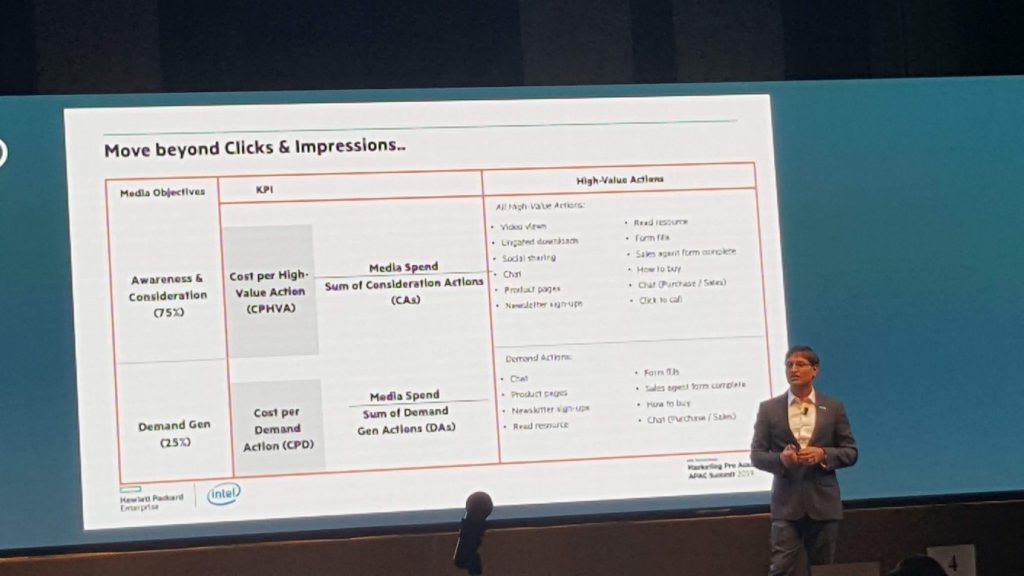
The image above shows many lingos which may require some effort to comprehend for advertisers. But the headline is succinct.
If agencies can also position themselves by adding a result-based approach, not only can it be a winning differentiator to separate themselves from the chaff, it could serve a great deal with their clients.
If and once the agencies do get the job, it is recommended to keep in mind to stay different and demonstrate that clients’ objectives are their objectives.
But truth be told, many agencies do not see this on the same plane as their customers. Perhaps not because agencies don’t want to, but they are simply not in the position to do so.
Applying result-based methodology requires different sets of thinking. From sales to marketing and project executives, the mindsets need to adjust to align as closely as possible, to the perspectives of the advertisers. And this, more often than not, lays at the heart of the leadership in digital agencies.
Result-based approach could put agencies in a stronger position to be selected if a digital campaign continues after an existing one. As an old saying goes, keeping existing clients is less resource intensive (and perhaps more profitable) than getting new ones.
Digital agencies in many parts of the regions could be heading for ‘blood sports’ going by global trends in advertising and marketing. Where competing for new accounts and getting existing accounts to do more are concerned, the latter can help incumbents stay rooted, if they play their cards right. To do so, digital agencies must up their ante.
In essence, digital marketing agencies might need to value-create rather than just value-add.
Digital agencies can jump from modus operandi to modus vivendi in their approach to B2B advertisers.
If you have been following the news in digital marketing in 2018, you may have come across the upheavals at WPP, a public listed company from Britain and one of the world’s largest advertising and creative agencies by managed accounts.
Besides a sudden changed in top leadership, WPP also lost key accounts such as HSBC and Ford Motor, which pulled in hundreds of millions of dollars in annual revenue.
While industry insiders I have chatted with refuted my analysis that the headwinds faced by WPP were due more to competition rather than the inability of not being able to play vital and strategic roles to advertisers, I reiterated and pointed out the need to be different and not operate in a business-as-usual approach and worst of all, mislead advertisers with a façade of cosmetic metrics.
What I also want to note for readers is that WPP’s businesses cover a wide spectrum of portfolios, such as brand consulting, creative and design, artwork and program conceptualisation. Digital marketing occupies a relatively small part of their offerings.
A commentary hit the nail on the head in what I have been trying to convey to smaller digital marketing agencies down the value chain for so many years.

The above extract was published in The Business Times on 8th Dec 2018.
This also points to my earlier remark about being in modus vivendi mode.
In one of my initiatives, there were several digital marketing firms which responded to a call-for-proposal (CFP) for a lead generation digital campaign for IT solutions I spearheaded with our global cloud-based principal.
All the agencies stated in their quotations a much higher amount in professional fees than the advertisement spend (ad spend) for an 8-week campaign. But two of them took a more balanced approach. After about a month and several rounds of discussions with all vendors, we chose one to begin.
Eight weeks zoomed by. There were multiple learning points in the course of the project. Here are a few pointers which I picked up for this essay.
- Consultative approach was mostly missing from all agencies. None of them were able to connect to my campaign objectives and business goals.
Only one somewhat did, but used outdated metrics to measure my campaign, which was landing page or website visitation count!
I said NO, as these measurements were cosmetics. They either didn’t know (or didn’t want) other ways to measure. I told them un-scrubbed marketing qualified leads (MQLs) would be fine. They were reluctant and shared that landing page or website visitation metrics looked better! I was floored by their comments.
I later learnt that agencies live and breathe impressions and clicks instead of end results. This is because everyone in commerce knows that there is no guarantee to business success. There are risks in any business activities.
Armed with this mindset, it is a safer option from digital agency to position themselves using task-based approach in bidding for projects. For advertisers, it is strongly suggested to learn how to read between the lines, probe further into the form of measurements recommended in campaign and how those metrics may pan out.
- Ensure visibility in where my ads went has been an endeavour I paid enough attention to the chagrin of some agencies. In one of the campaigns which my team-mates ran, I requested for a list of sites where my ads were published. This is usually easy to extract where display advertisement is concern. I was provided with a list but in it, there was no indication of how many impressions were served initially other than the websites the ads were pumped into. Knowing the websites where ads would land is insufficient. Knowing the impressions served in granular count may be necessary.
Otherwise, it is almost like ‘walking in the dark’.
Take print ads in traditional advertising for example, publishers would inform potential advertisers several key elements so that advertisers can better decide if they want to invest their marketing dollars. Below are some traditional considerations which have similar characteristics to digital
- Circulation count. How many subscribers a publisher has? (this is similar to “reach” in digital platforms). This gives an idea of the impressions or the number of people an ad could be seen by viewers
- Location (or sometimes known as distribution). Where does the publisher’s print copy distribute to? This is similar to geo-location in digital platforms or broken down into finer demographic segments
One angle which digital advertising offers that traditional could not, is the number of times your ad is served. In digital, my ad is served in the form of impressions. Besides knowing where the ad lands, knowing how many times an ad is served in that website or portal can be useful when analysing its results.
Videos were used as a content magnet to attract eyeballs in one of a SaaS services I was driving. But unfortunately, the videos were served in inappropriate sites, such as gambling and pornography portals.
It took some time for the need to have advertiser’s contents published in relevant and reputable sites, to crystallise for both advertisers and agencies and not leave it to platform owners’ discretion by selecting “automatic” or “allow algorithms to choose the best sites for you”.
In my advertiser self, I was skeptical that the established agencies I worked with were not aware of this subtle requirement at the outset. Such information can aid efforts in course correction, save resources and optimise CTRs.
The campaign was midway through when I noticed it. It was then deemed too late for a replacement course correction to be meaningful.
When the affiliated sites where my videos were calibrated, the next thing to monitor was the number of times my ad appeared. If the number was low, I may then decide to work with the agency to further calibrate by dumping low CTRs sites, kept those which performed better and tested out others.
During execution phase, advertisers are recommended to pay close attention to these operational matters and not solely leave it in the hands of their agencies.
Thank you for reading and hope you have a great digital marketing journey in 2019.
 Login as
Login as



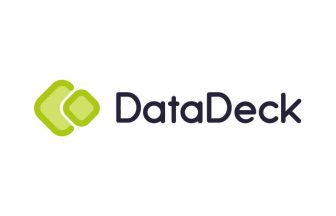





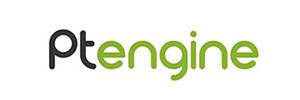
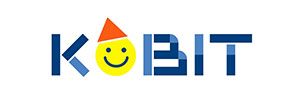

























;>/img/banner/partner $url=>$index; .png)
No comments yet.